Collection
Collection Highlights
A comprehensive collection of rare artifacts showcasing Nagasaki’s rich history of international exchange—all in one place!
The Nagasaki Museum of History and Culture houses one of Japan’s most extensive collections of rare historical materials, artworks, and old documents related to the history of international exchange.
Objects that tell the story of the Nanban trade
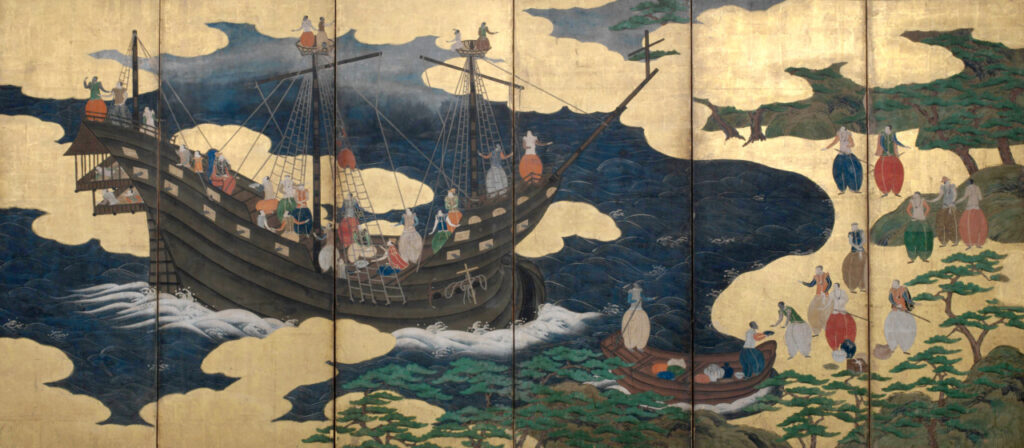
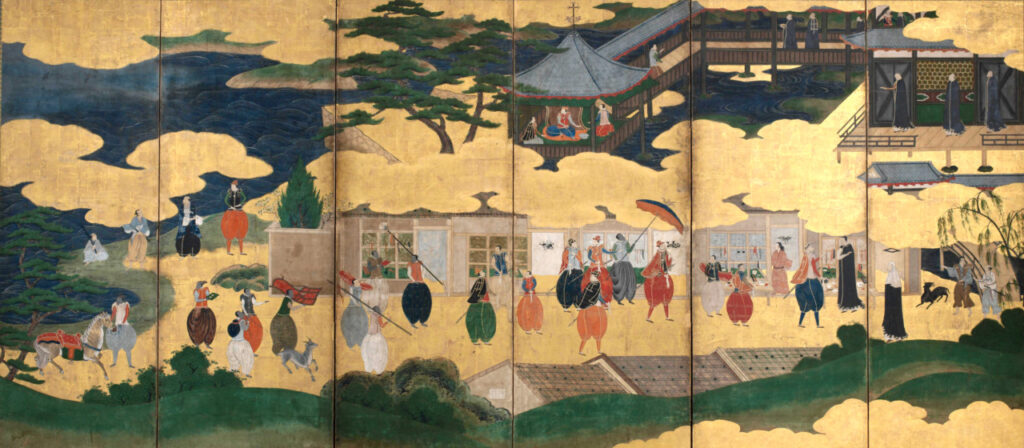
“Westerners Arrive in Japan”
(Nationally Designated Important Work of Art) Early 17th century
Japanese referred to the first Europeans to reach Japan as Nanban, translated literally as “Southern barbarians”. Nanban folding screens like this one depicted the arrival of Nanban ships and the customs of Western visitors. In the early modern era, Nagasaki flourished as a port of call for Nanban trade. The Museum’s collection also features Nanban lacquerware, Nanban sword guards (tsuba), world maps, and numerous other artifacts evoking the trade of that period.
The painter that revealed Japan to the West
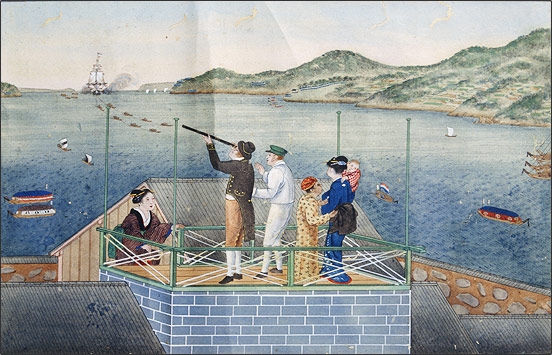
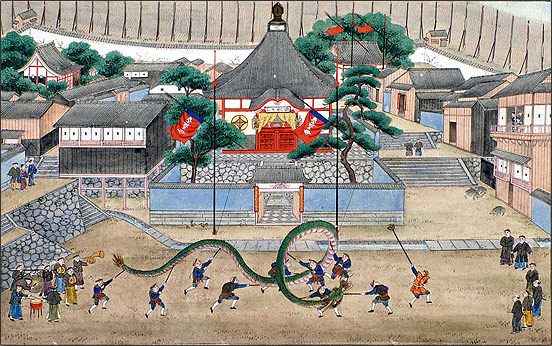
Views of the Dutch Factory and Chinese Quarter
(Nationally Designated Important Work of Art) Kawahara Keiga 19th century
Nagasaki artist Kawahara Keiga worked in the service of Philipp Franz von Siebold, resident physician at the Dutch trading post of Dejima. Many of his works made their way to the West, helping to introduce Japan to the world. Keiga’s paintings were realistic depictions of Japanese landscapes, daily life, plants and animals, and are thus a precious source of information about his times.
The Nagasaki school of painting that ushered in a new phase
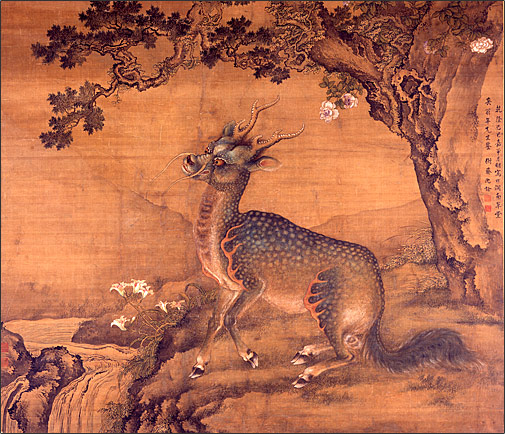
Qilin
Shen Quan (Shin Nanpin) 18th century
During the Edo period, Nagasaki saw the rise of multiple artistic styles: Ōbaku painting, Chinese painting (Kanga), the Nanpin school, Nanga or Southern painting, and Western-style painting. These various styles were collectively referred to as “Nagasaki school”, and breathed new life into Japan’s contemporary art world, impacting it significantly.
This picture of a qilin is a masterpiece, with a bold and imposing style.
Shen Quan’s realistic and vividly colorful paintings were appreciated even by shoguns and daimyos.
Japan’s taste for the exotic
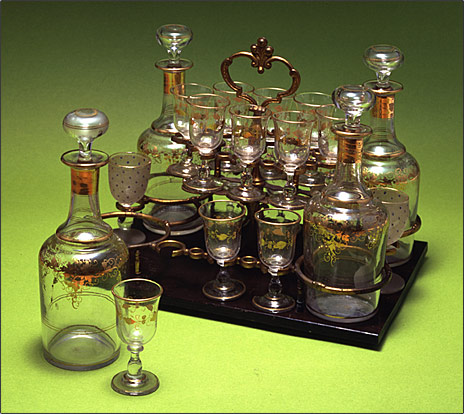
Glass drinking set, gift attributed to Siebold
Early 19th century
This drinking set is believed to have been gifted by German doctor Philipp Franz von Siebold to the lord of Isahaya. Glass was called “bidoro” or “giyaman” in Japan, and was highly prized. In addition to glassware, Dutch and Chinese ships brought to Japan ceramics, chintz, gilt leather and other foreign products, which captivated the Japanese with their exoticism.
Europe’s taste for the exotic
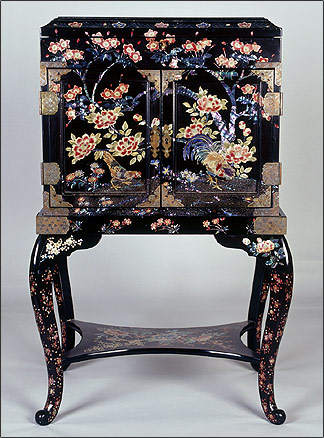
Mother-of-pearl inlaid cabinet desk
19th century
Japanese lacquerware and ceramics were exported in large quantities from Nagasaki. These objects captivated Europeans with their oriental taste, and became prized status symbols among royalty and nobility.
Crafts that flourished in Nagasaki
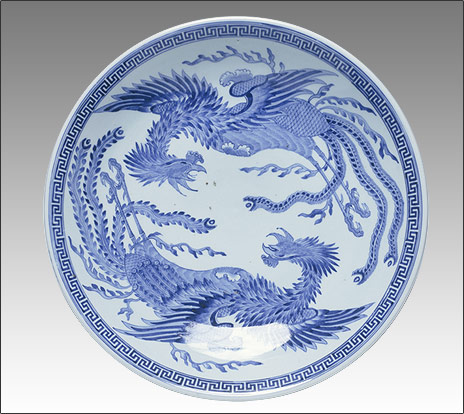
Kameyama ware large porcelain bowl with paulownia and Chinese phoenixes in underglaze blue
Kameyama ware 19th century
Influenced by the Chinese literati taste, the Kameyama kiln of Nagasaki initially produced earthenware water jugs, but later on began importing gosu (blue pigment) and clay from China, enabling the production of fine-quality porcelain. As a result of the exchanges with the Netherlands and China, ceramics, glassware, tortoiseshell work, embroidery, and other unique handicrafts produced in Nagasaki were deeply influenced by foreign aesthetics.
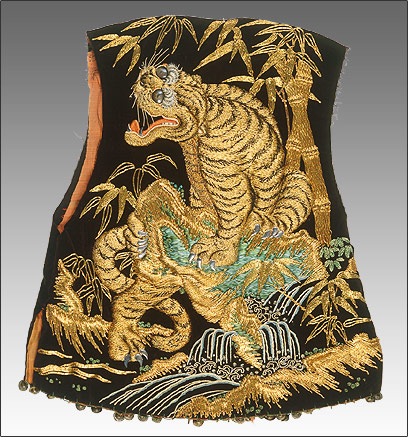
Embroidered lion dance costume
Nagasaki embroidery
In the mid-Edo period, Nagasaki embroidery developed under the name of “Chinese-style embroidery”. It was based on Chinese embroidery techniques introduced by Chinese people, using gold and silver threads to create Chinese-style patterns. Over time, it evolved into a unique art form featuring designs of animals and fish drawn by Nagasaki artists. This craft is particularly well-known for its use in the costumes and kasaboko of the Nagasaki Kunchi, the grand festival of Suwa Shrine.
The cornerstone of international trade: the Nagasaki Magistrate’s Office
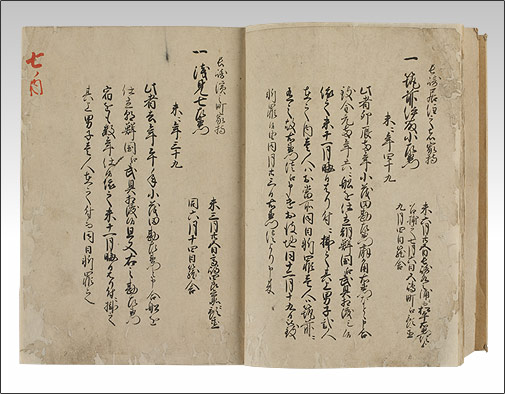
Hankachō (Criminal Investigation Records)
17th-19th centuries
During the Edo period, Nagasaki was under the direct control of the shogunate: to administer the city, magistrates were dispatched from Edo. 127 magistrates left their footprints in the Nagasaki Magistrate’s Office. Nagasaki’s unique history of overseas exchange is illustrated by valuable historical materials, such as the Hankachō, which contains 200 years of trial records on smuggling cases and other matters, and the Dutch-Japanese Treaty of Peace and Amity signed in 1856 (a Nationally Designated Important Cultural Property).
The founder of Japanese photography
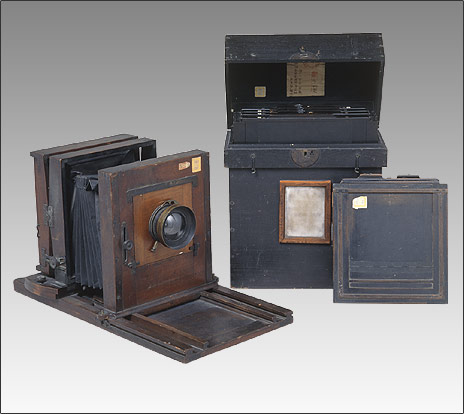
Camera used by Ueno Hikoma
Ueno Hikoma encountered photography while studying chemistry under the Dutch physician Pompe van Meerdervoort, and later received photographic training from the Swiss photographer Pierre Rossier. He assisted in an astronomical observation of Venus, and photographed the battlefield of the Satsuma Rebellion. This camera was used in Ueno Hikoma’s photo studio.
